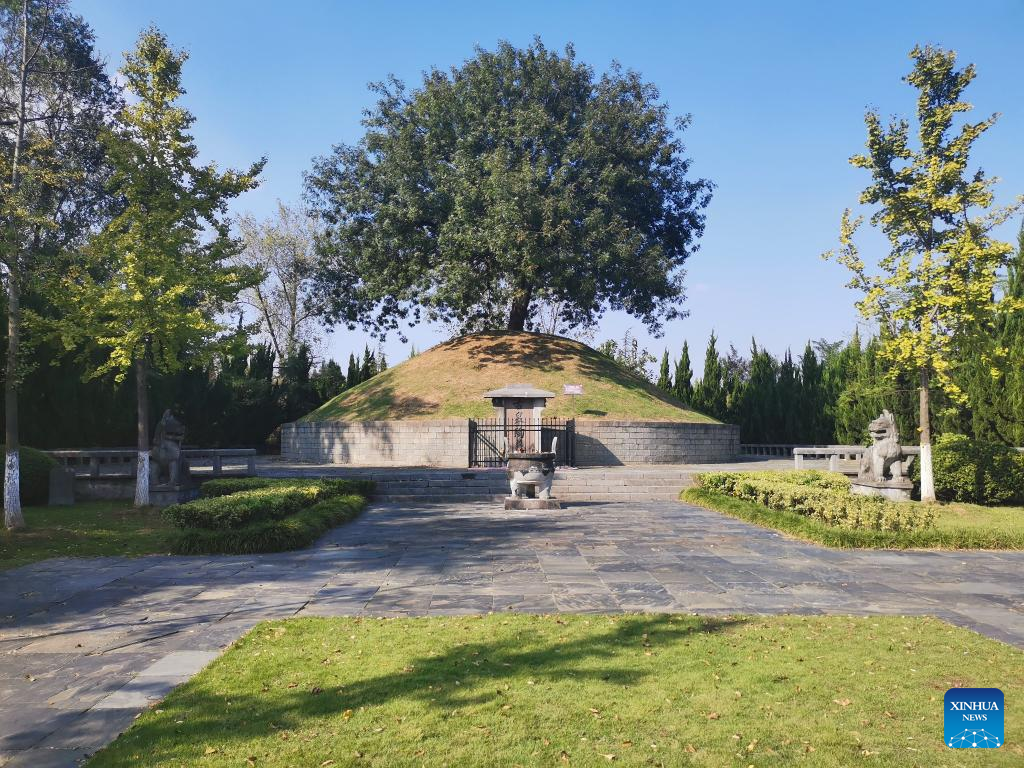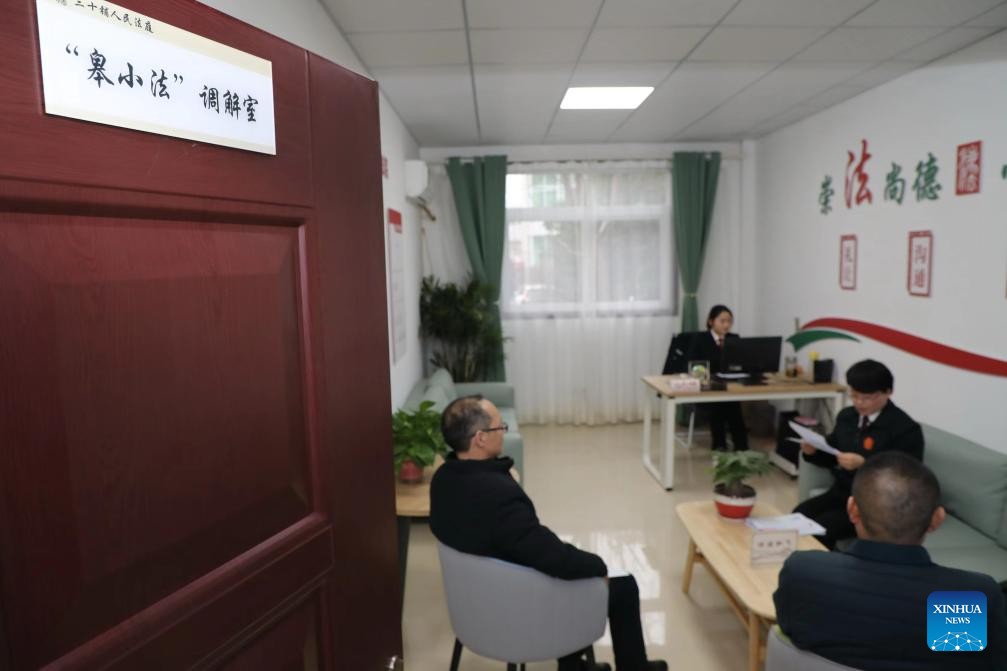
This photo taken on Oct. 20, 2023 with a mobile phone shows the tomb of Gao Yao, honored as China's earliest judge, in Lu'an City, east China's Anhui Province. (Xinhua/Liu Fangqiang)
HEFEI, Nov. 2 (Xinhua) -- By the time the Code of Hammurabi was first introduced in ancient Babylon about 3,800 years ago, China had already implemented a rudimentary set of laws rooted in unwritten rules and traditions. These early laws, according to legend, were made by Gao Yao, honored as China's earliest judge.
Born over 4,000 years ago, Gao Yao is believed to have held the position of judicial officer. According to the ancient "Shangshu," one of China's earliest compilations of historical documents, he devised five distinct forms of punishment tailored to suit varying degrees of wrongdoing. Also, he espoused the idea of harmonizing governance through education, emphasizing moral virtue alongside law and advocating principles like caution in punishment and light punishment to ensure long-term stability.
The spirit embodied in these ancient laws remains vibrant and continues to influence the people of the city of Lu'an in east China's Anhui Province, which was once granted as a fief to Gao Yao's descendants to commemorate his contributions, said Li Deyun, secretary general of the Gao Yao culture research society of Lu'an.
"The spirit of Gao Yao's legal philosophy serves as one of the cultural symbols of the city," Li added.
Thousands of years on, authorities in Lu'an, like everywhere else across China, have been stepping up efforts to promote the rule of law and carry forward fine traditional Chinese legal culture.
A decade ago, due to inconvenient transportation in the mountainous regions of the city, it would take nearly half a day for local residents to make their way to the courthouse. To solve the issue, grassroots courts in Lu'an in 2015 initiated a system of "mobile courts" in areas where transportation was a challenge, thereby addressing juridical processes at people's doorsteps.
Judicial personnel, carrying the national emblem and equipped with computers, cameras and network connections, employ a portable courtroom system to organize trials. They film and broadcast proceedings at mobile court locations in real time via the internet, making it convenient for supervisory bodies to monitor the process.
In March 2021, the grassroots court of Sanshipu Township in Lu'an accepted a case involving compensation claims for tree damage. After filing the case, the head of the court, Zhu Wanhao, decided to conduct the trial right at the site where the trees were damaged and invited local villagers who faced similar situations to attend.
"The case was properly handled with field investigation. Thanks to the case, we solved many similar disputes. All residents received their due compensation," said Zhu.
Although the transportation infrastructure has improved significantly in recent years, mobile courts are still used for specific cases to popularize law and caution relevant individuals. For instance, dangerous driving cases are heard in driving schools, labor disputes are solved in relevant companies and high-rise littering incidents are handled in residential communities, explained Wang Kun, an official of the publicity department of the Intermediate People's Court of Lu'an.
In Chinese culture, harmony and peace are considered precious. Mediation has also played an important role in China in solving disputes before cases are heard in court. Gao Yao had advocated that punishments should play a secondary role, with a primary emphasis on enlightening those who have committed wrongdoings.
"We received nearly 1,300 cases a year in busy times, but up to 55 percent of cases were mediated," said Zhu, adding that Chinese people sometimes hesitate to face public confrontations in court. Instances such as labor disputes, divorces, private lending conflicts and contractual disagreements are often best resolved through mediation, leading to the most effective social outcomes, Zhu added.
In the east of Lu'an lies the Gao Yao Community, where Gao Yao's tomb is located. His tomb is in the northeast corner of this community. On top of it stands a canopy-shaped tree, creating a picturesque and majestic sight.
Huang Qibing, 88, is a dedicated tomb keeper who has been guarding the tomb for a decade.
"As children, we always heard about Gao Yao, a renowned figure in our local history. Being able to guard his tomb holds great meaning," said Huang. ■

This photo taken on Feb. 23, 2023 with a mobile phone shows judges mediating a dispute at the court of Sanshipu Township in Lu'an City, east China's Anhui Province. (Photo by Wang Li/Xinhua)



